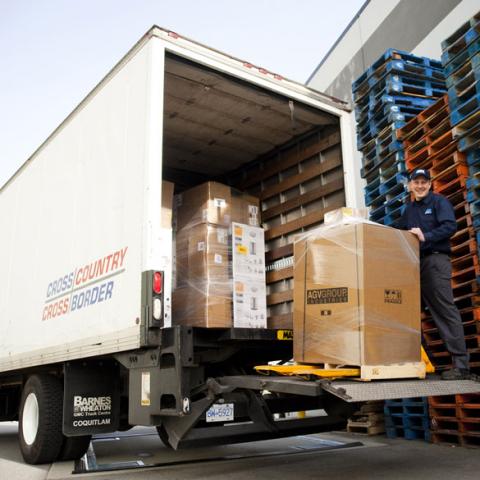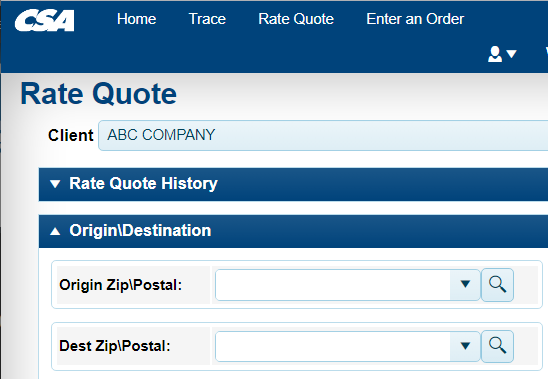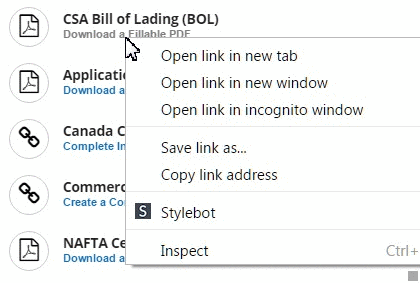What is Lead Time in Shipping? Tips to Optimize Your Business and Increase Customer Loyalty
Within the logistics and shipping industry, lead time plays a critical role in preparing, processing, and handling orders. Consumers and businesses also use lead times as a way to plan ahead for their orders.
Today, we'll answer “What is lead time?” and “What does lead time mean in shipping?” We’ll also discuss why it’s vital for your business, the different categories, factors influencing lead times, and other important information.
What is Lead Time in Shipping?
What does lead time mean? Very simply, lead time is the period that starts from the moment an order is placed to when it is delivered. During this period, the order is processed and handled before the order is sent out for delivery.
Lead time is essential and beneficial to both businesses and customers. Businesses use lead time to give them time to get the order processed and packed, and it informs consumers when their order will arrive.
Bear in mind that lead times vary depending on the type of product, the order size and other factors. So it’s important to check with the business in question for an accurate lead time estimate.
Many people often ask, "Does lead time include shipping?" and the answer is no. It just buys the business some time between the order being placed and the order being delivered.
Why are Delivery Lead Times Important in Shipping?
Delivery lead times are critical in the shipping business; it allows for efficient planning, smooth operations, and good turnover so that all orders are sent out in a timely manner, which is especially important for international shipping. Lead times don't just affect your business but also the delivery process, supply chain management, and other logistics.
Lead times help businesses plan out the entire process of receiving orders, packing, and shipping. It should help prevent any delays in each department if all operations are well-planned and running smoothly.
Regarding perishable goods, your company's lead time for delivery is extremely important as the supplier, the delivery, and the receiver of the goods all plan their order based on the lead time that you provide them.
Reducing lead times translates into faster warehouse production with shorter delivery windows. For example, a 2020 survey reports that 85% of online shoppers look for businesses with the fastest shipping. Consumers pay attention to shipment lead times when they decide to buy a product online.
This is why it is very important that your business has an efficient lead time, and the more you can decrease it, the more you can increase overall productivity for your business.
Shipment Lead Times Categories
There are different types of lead times categories, and knowing what each one means will help your business implement efficient processes.
Customer Lead Time
This lead time covers the period of time from the moment the order was placed with a company to when it was delivered to the customer.
Material Lead Time
The material lead time starts once a company places an order with the supplier and ends when the order has been received. This lead time is between the company and the supplier.
Production or manufacturing lead time
This period of time covers how long it will take a company to produce or manufacture the product once it is ordered. If the company sells ready-made items, this lead time will be much shorter than if the company makes each item to order.
Cumulative lead time
This lead time summarizes all three lead times, starting from when the order was placed and ending with delivery.
Factors Affecting Lead Times
As previously mentioned, minimizing lead delivery times is important, and delays can cause a negative outcome for your business. When you inform customers of your lead time, the last thing that you want is delays, but in the shipping business, this is an unfortunate occurrence.
Around 39% of buyers will move to a different seller after experiencing just one negative experience. This is something that you will want to avoid, especially as more and more businesses are now advertising the next day or express shipping as an effective marketing tool.
Shorter lead times will help give your customers a five-star experience and encourage them to be repeat shoppers. With that goal in mind, here are some factors that will affect your lead times.
Processing and Handling
This happens after the order has been placed. It can include many things, from picking the boxes in which the order will be packed, completing all paperwork, processing the order through a company's software, and other important tasks.
The more disorganized this process is, the longer your lead time will be. A good way to prevent any delays is by streamlining the process using automation. This will help ensure there are fewer errors and that the entire process operates smoothly and quickly.
You can do this by using software to calculate key performance indicators, recognize optimal reorder points, and track inventory. Smart computers and cameras can track and monitor progress as well as help point out areas that could use some improvements.
Your customers will appreciate the shortened lead time.
The production process
The production process can delay your lead time, especially if it involves multiple processes or if there are any delays in the sourcing and delivery of raw materials.
Inventory management
This one is really important. One way to really slow down lead time is by having insufficient stock. This can stop the entire production, so you need to make sure your business is maintaining inventory levels with an up-to-date stock list.
Supply Chain
If your company has multiple materials suppliers, it can become very difficult to keep track of all the inventory stock. Low stocks can cause production delays and affect your overall lead time. Luckily, you can use software to keep track of all stock.
Suppose one of your suppliers is unable to provide certain materials. In that case, this can also cause some serious delays and affect the production and delivery times.
Logistics lead time
You also need to factor in delays that are caused by shipping logistics. Keep a record of pick-up dates for third-party logistics, especially around the holidays. International deliveries can be affected by delays such as adverse weather conditions, customs, quarantine, or inspections.
Delivery speed
If you are offering express shipping or next-day shipping, this will greatly affect your lead time. It is recommended to make sure you have taken into account all other factors like supply levels and logistics before committing to a very short lead time. All of these factors will affect your business's lead time.
How to Delivery Calculate Lead Times
Your lead time will include the three different categories and will be affected by a number of different things, but it is possible to calculate your lead time. Use this general lead time formula.
Lead time = Pre-Processing Time + Processing Time + Post-Processing Time
- Pre-processing: This is the period of time when raw materials are sourced and delivered to the company's manufacturing plant.
- Processing: This is the manufacturing or production time
- Post-processing: This is when the order is processed and delivered to the customer.
Using this general formula will help you plan your lead time efficiently.
How to Reduce Delivery Lead Times
Reducing your lead time for shipping is a good way of speeding up turnover, increasing products, and keeping your customers happy. Additionally, by reducing the time it takes for orders to be completed and delivered, organizations can streamline operational costs, and reduce waste. Here are some ways to reduce your delivery lead time.
Automate Your Processing
Manual processing can take time and result in human errors. Use automation software to keep track of inventory, paperwork, and processing of orders. You can choose to automate your entire process or identify parts that need improvement. This will shorten your order lead times.
Ensure Labor is Efficient
Speeding up your processing time can really improve delivery lead times, and one good way of doing this is by ensuring all employees are busy working towards the same goal. If you notice that some employees are waiting on other people, this means that your processing is not as efficient as it can be.
Simplify Your Chain of Supply
Avoid ordering supplies from a variety of different suppliers, as this can create confusion trying to track all incoming stock and inventory. Using too many different supplies can sometimes create delays in supplies or shortages because if one supplier is out of stock, this can create delays in your delivery lead time.
Try using fewer different suppliers and organizing the deliveries on the same day so that it is easier to keep track of what supplies are coming in.
Use Dropshipping
If possible, you may want to consider using dropshipping to reduce lead times. This means that a customer will place an order with you, and the product will be shipped directly from the manufacturer to them. You will not have to maintain any inventory to fulfill and ship the order.
Lower Delivery Lead Time with CSA Transportation
As leaders in truck transportation throughout Canada and the United States, CSA Transportation takes our lead times very seriously. Founded in 1986, we know how to deliver service excellence for freight shipping from the USA to Canada.
Our experienced logistics professionals provide customized service options that meet the needs of any business or organization. With our years of experience in the industry, we have created an efficient network of carriers and warehouses to ensure fast, reliable deliveries for our customers.
Contact us today to learn more about our services.






